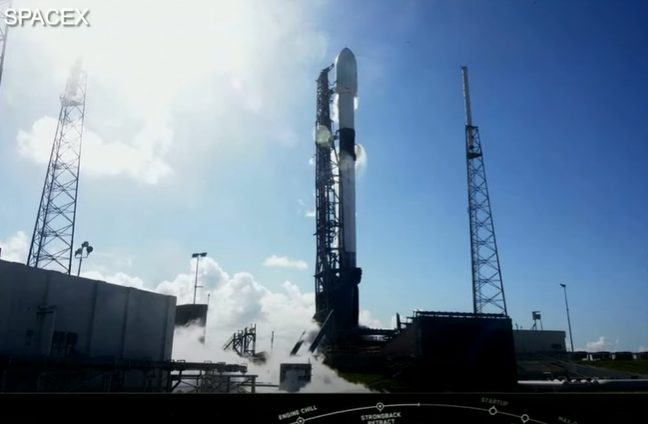SpaceX has yet launched another rocket on Monday to space, despite the technical glitches that delayed this blast off the previous week, CNN reported.
The launch happened atop the Falcon 9 rocket, and Anasis-II mission blasted off the skies at about 2:30 p.m. Pacific standard time from Florida's Cape Canaveral Air Force Station. SpaceX confirmed that it has been deployed into space successfully.
Operated by South Korean military
This launch is history in the making since it is the first time that a South Korean military communications satellite will take off to space orbit. The blast-off, unlike the previous launch from Japan by the United Arab Emirates, had a delay due to weather disturbances. This is exclusive of the original date of launch last week, Tuesday, and was postponed due to glitches repaired.
To give a background, the first phase of the Falcon 9 rocket launch on Monday was previously part of the May 30 launch featuring two astronauts in the International Space Station. The record-breaking 51-day turnaround time is a historic moment for the company on its rocket stage re-use.

The launch of Anasis-II marks the 12th edition of the SpaceX takeoff this year, the 90th flight of Falcon 9 and the second overall for this particular space travel. The booster was first blasted off last May with NASA astronauts Bob Benhken and Doug Hurley onboard.
The first stage of Falcon 9's launch on the drone ship called "Just Read the Instructions" is stationed in the Atlantic Ocean, the report pointed out further.
Also Read: SpaceX is Cleared for Falcon 9 Launch; Has the Weather Favorability Improved?
Meticulous planning
This satellite was planned to have launched on July 14 but they postponed it to make sure that the hardware will not have any glitches, thus is at the second phase.
Comet NEOWISE over Falcon 9 and ANASIS-II vertical on SLC-40. Today’s launch window opens at 5:00 p.m. EDT and closes at 8:55 p.m. EDT, and weather is looking 70% favorable → https://t.co/bJFjLCzWdK pic.twitter.com/5ITydgvQVI — SpaceX (@SpaceX) July 20, 2020
Anasis-II is South Korea's first military communications satellite, and because of its ties with the army, there is limited information about it, except that it is from the Eurostar E3000 satellite bus of Airbus. The E3000 satellite ranges from 4,500 to 6,500 kilograms at blastoff, NASA reveals.
Presence in the launch
Before the takeoff, South Korea's defense development agency president Sae Kyu Nam expressed regret since Nam was not able to be present during the launch because of the COVID-19 pandemic. He conducted a broadcast, and stated, "Gods are with us to pave a path toward the heavens. Falcon 9, seize the future."
During the UAE spacecraft's launch the previous day, the Arab government expressed how this is a beacon of hope and pride among the youth in the area.
After liftoff, and after around 32 minutes, the Anasis-II spacecraft was deployed. The webcast did not broadcast the live deployment due to the customers' requests, but it had the verbal confirmation on the video stream.
Also Read: [VIDEO] SpaceX Starship SN4 Prototype Leaked; Here's How It Looks
ⓒ 2025 TECHTIMES.com All rights reserved. Do not reproduce without permission.
![Best Gaming Mouse For Gamers With Smaller Hands [2025]](https://d.techtimes.com/en/full/461466/best-gaming-mouse-gamers-smaller-hands-2025.png?w=184&h=103&f=6fd057ef777bd39251d4e7e82e9b23f1)



![Best iPads that Students Can Use in School [2025]](https://d.techtimes.com/en/full/461431/best-ipads-that-students-can-use-school-2025.jpg?w=184&h=103&f=516289300e12e9647ef3d5bd69f49b70)